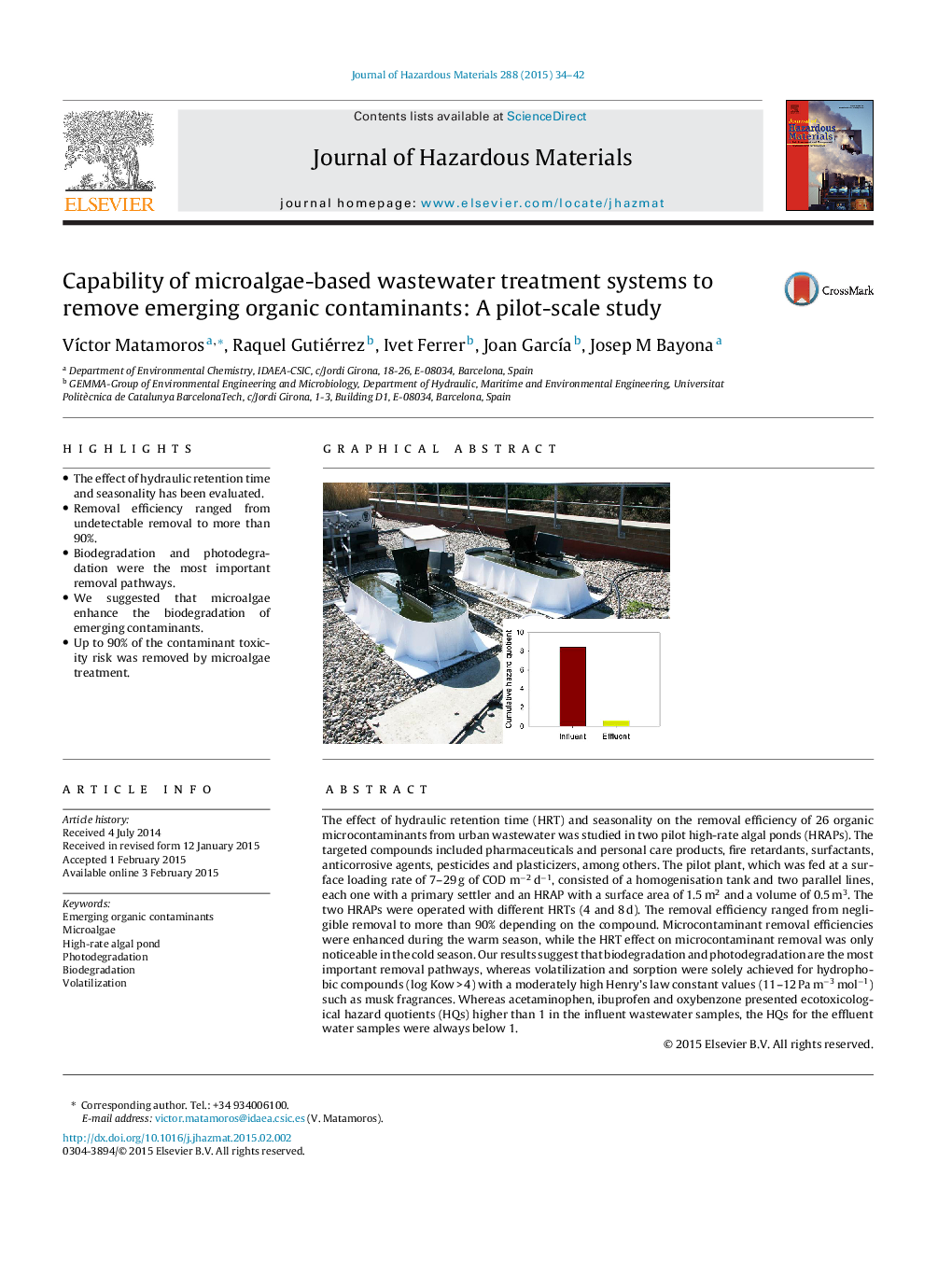| Article ID | Journal | Published Year | Pages | File Type |
|---|---|---|---|---|
| 576088 | Journal of Hazardous Materials | 2015 | 9 Pages |
•The effect of hydraulic retention time and seasonality has been evaluated.•Removal efficiency ranged from undetectable removal to more than 90%.•Biodegradation and photodegradation were the most important removal pathways.•We suggested that microalgae enhance the biodegradation of emerging contaminants.•Up to 90% of the contaminant toxicity risk was removed by microalgae treatment.
The effect of hydraulic retention time (HRT) and seasonality on the removal efficiency of 26 organic microcontaminants from urban wastewater was studied in two pilot high-rate algal ponds (HRAPs). The targeted compounds included pharmaceuticals and personal care products, fire retardants, surfactants, anticorrosive agents, pesticides and plasticizers, among others. The pilot plant, which was fed at a surface loading rate of 7–29 g of COD m−2 d−1, consisted of a homogenisation tank and two parallel lines, each one with a primary settler and an HRAP with a surface area of 1.5 m2 and a volume of 0.5 m3. The two HRAPs were operated with different HRTs (4 and 8 d). The removal efficiency ranged from negligible removal to more than 90% depending on the compound. Microcontaminant removal efficiencies were enhanced during the warm season, while the HRT effect on microcontaminant removal was only noticeable in the cold season. Our results suggest that biodegradation and photodegradation are the most important removal pathways, whereas volatilization and sorption were solely achieved for hydrophobic compounds (log Kow > 4) with a moderately high Henry’s law constant values (11–12 Pa m−3 mol−1) such as musk fragrances. Whereas acetaminophen, ibuprofen and oxybenzone presented ecotoxicological hazard quotients (HQs) higher than 1 in the influent wastewater samples, the HQs for the effluent water samples were always below 1.
Graphical abstractFigure optionsDownload full-size imageDownload as PowerPoint slide
